MỘT SỐ YẾU TỐ LIÊN QUAN ĐẾN MỨC ĐỘ VÔI HOÁ ĐỘNG MẠCH VÀNH TRÊN PHIM CHỤP CẮT LỚP ĐA DÃY
Nội dung chính của bài viết
Tóm tắt
Đặt vấn đề: Vôi hóa động mạch vành (CAC) được xem là yếu tố nguy cơ quan trọng của các biến cố tim mạch. Với sự phát triển của chụp cắt lớp vi tính đa dãy (MSCT), việc đánh giá mức độ vôi hóa động mạch vành thông qua điểm Agatston ngày càng chính xác. Mục tiêu: Tìm hiểu một số yếu tố liên quan đến mức độ vôi hóa động mạch vành trên phim chụp MSCT. Phương pháp nghiên cứu: Nghiên cứu mô tả cắt ngang trên 111 bệnh nhân đau ngực được chụp MSCT và chụp mạch vành tại Viện Tim mạch Việt Nam. Thông tin hành chính, lâm sàng và cận lâm sàng được thu thập. Điểm Agatston được tính toán và phân tích hồi quy tuyến tính để đánh giá mối liên quan với các yếu tố nguy cơ. Dữ liệu được xử lý bằng phần mềm SPSS 16.0. Kết quả nghiên cứu: Tuổi trung bình của bệnh nhân là 64,9 ± 8,6 năm, với tỷ lệ nam giới chiếm 68,5%. Tăng huyết áp, rối loạn lipid máu và hút thuốc lá lần lượt chiếm 77,5%, 44,1%, và 49,6%. Điểm Agatston trung bình là 110,3 (khoảng 8,9-287). Nghiên cứu cho thấy có mối tương quan tuyến tính giữa tuổi và điểm Agatston ở nhóm nghiên cứu chung (hệ số hồi quy 11,39, p < 0,005). Ở nhóm hội chứng vành cấp, điểm Agatston liên quan đến Pro-BNP, LVEF và tuổi, trong khi không ghi nhận mối liên quan ở nhóm đau ngực ổn định. Kết luận: Mức độ vôi hóa động mạch vành có mối liên quan thuận với tuổi và một số yếu tố khác ở nhóm hội chứng vành cấp. Nghiên cứu nhấn mạnh vai trò của điểm Agatston trong đánh giá nguy cơ tim mạch, đồng thời gợi mở hướng nghiên cứu tiếp theo với quy mô lớn hơn.
Chi tiết bài viết
Từ khóa
Vôi hóa động mạch vành, điểm Agatston, MSCT, hội chứng vành cấp, yếu tố nguy cơ
Tài liệu tham khảo
2. Budoff. M. J, Shaw. L. J, T. LS. Long-Term Prognosis Associated With Coronary Calcification. Journal of the American College of Cardiology. 2007;49:1860-1870.
3. MJ Budoff, Möhlenkamp. S, R. M. A comparison of outcomes with coronary artery calcium scanning in Unselected Populations - The Multi-Ethnic Study of Atherosclerosis (MESA) and Heinz Nixdorf Recall Study (HNR). J Cardiovasc Comput Tomogr. 2014;7(3):182-191.
4. Gökdeniz T, Kalaycıoğlu E, Aykan A, et al. Value of coronary artery calcium score to predict severity or complexity of coronary artery disease. Arq Bras Cardiol. Feb 2014;102(2):120-7. doi:10.5935/abc.20130241
5. J.Lambrechtsen, O.Gerke, K.Egstrup. The relation between coronary artery calcification in asymptomatic subjects and both traditional risk factors and living in the city centre: a DanRisk substudy. J Intern Med. 2012;271(5):444-450.
6. Schmermund A, Lehmann N, Bielak LF, et al. Comparison of subclinical coronary atherosclerosis and risk factors in unselected populations in Germany and US-America. Atherosclerosis. Nov 2007;195(1): e207-16. doi:10.1016/j. atherosclerosis.2007.04.009
7. Nucifora G, Schuijf JD, van Werkhoven JM, et al. Prevalence of coronary artery disease across the Framingham risk categories: coronary artery calcium scoring and MSCT coronary angiography. Journal of nuclear cardiology: official publication of the American Society of Nuclear Cardiology. May-Jun 2009;16(3):368-75. doi:10.1007/s12350-009-9059-z


